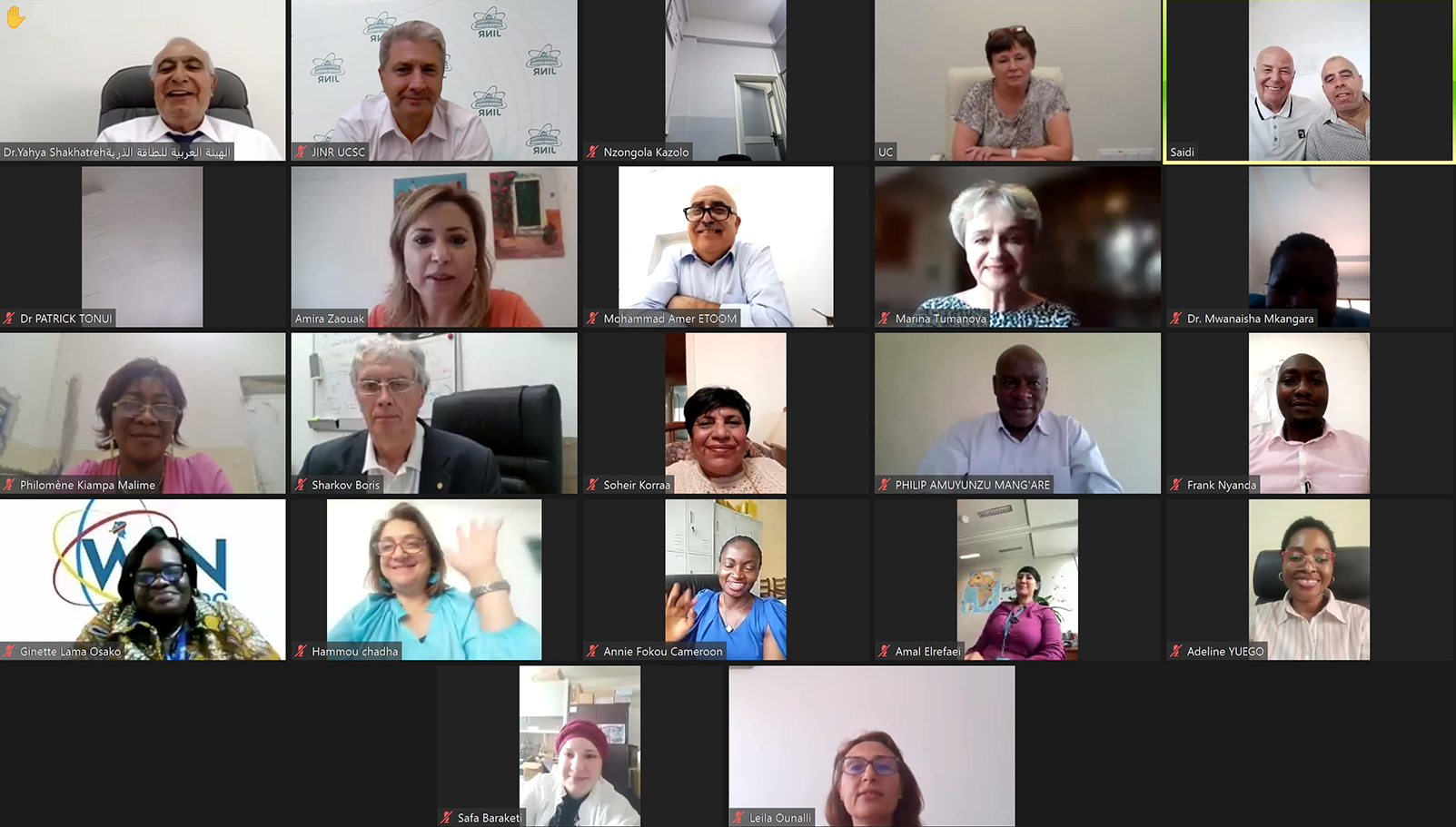Issues of radiation cytogenetics discussed at Arab Atomic Energy Agency
News, 05 June 2024
On 4 June, a webinar took place within the work programme of the JINR Information Centre at the Arab Atomic Energy Agency. The event was organized by the AAEA together with Women in Nuclear Tunisia and the University Centre of the Joint Institute for Nuclear Research. As part of the online meeting, Elena Nasonova, Head of the Research Group for Complex Chromosome Aberrations at the Laboratory of Radiation Biology at JINR spoke about cytogenetic studies at JINR.
Boris Sharkov, Special Representative of the JINR Director for Cooperation with International and Russian Scientific Organizations, delivered an opening speech. He noted that the webinar has already become the third joint event this year.
“Today, on account of the JINR scholarship programme, students from Arab countries have the opportunity to carry out research at the Joint Institute. In the near future, we plan to establish a joint project on nuclear methods in life sciences and applied environmental technologies with the support of the Arab Atomic Energy Agency and Women in Nuclear Tunisia,” Boris Sharkov said, stressing the importance of holding such events to strengthen the ties between JINR and AAEA.
Moderator of the seminar and President of Women in Nuclear Tunisia Amira Zaouak thanked the AAEA and JINR for their active involvement in the organization’s initiatives, establishing international cooperation networks between scientists, and promoting the idea of peaceful use of nuclear technology for the benefit of science. Introducing Candidate of Biological Sciences Elena Nasonova to the audience, she noted the scientist’s most significant achievements, including more than 130 publications in the field of radiation cytogenetics and more than 20 years of work at the GSI Helmholtz Centre for Heavy Ion Research (Darmstadt).
Having told in detail about research work at LRB at JINR, Elena Nasonova outlined the key practical tasks in cytogenetics that the Laboratory scientists set for themselves today, and answered numerous questions.
In her report, Elena Nasonova presented widely used cytogenetic methods that allow for the registration of chromosomal structural rearrangements, also known as chromosomal aberrations. Chromosome aberrations are sensitive markers of radiation exposure. The metaphase method of chromosomal aberration analysis is most widely used in radiation cytogenetics. Most often, this method is used in biological dosimetry to estimate the radiation dose received by a person based on the frequency of aberrations induced in blood lymphocytes. Extensive epidemiological research also demonstrated that a high level of spontaneous chromosomal aberrations in healthy individuals is associated with an increased risk of carcinogenesis. The frequency of chromosomal aberrations in lymphocytes from patients irradiated in vitro is a prognostic indicator of the risk of significant adverse effects from radiotherapy for tumour treatment.
The most advanced technique in molecular cytogenetics, multicolor fluorescence in situ hybridisation (mFISH), allows for the precise identification of each pair of human chromosomes and the accurate registration of any rearrangements between them. In addition, it enables the analysis of complex aberrations caused by high-LET radiation and the assessment of the stability of aberrant cells that are capable of surviving within an irradiated population. mFISH is utilised in LRB for the analysis of aberrations caused by radiation of various qualities, as well as for assessing the genetic stability of cultured stem cells and determining the cytogenetic risks associated with tumour radiotherapy.
At the end of the webinar, Amira Zaouak and representatives from the Arab Atomic Energy Agency expressed their gratitude to the speaker for the interesting presentation. The colleagues from the AAEA noted they were willing to continue the series of thematic seminars on life sciences and environmental applications, with the support of the Information Centre of the Joint Institute.

